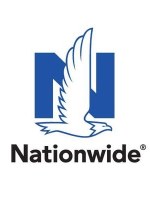04/21/2025 – Did you know that financial advisors who proactively seek new clients have been shown to grow their AUM at a rate 115% higher than those who don't actively prospect?1 Whether you're just starting out or looking to scale your practice, mastering the art of prospecting can lead to building deeper client relationships, growing your book of business, and ultimately making a greater impact as a financial professional. But let's be honest, prospecting can feel daunting. With the right strategies and mindset, you can turn prospecting from a stressful task into one of the most rewarding parts of your career. Below, we’ll provide actionable tips to help you level up your prospecting game.
The ultimate goal: relationship-building
We all know what client prospecting is, but how can we truly excel at it? At its core, client prospecting is the process of identifying, reaching out to, and converting potential clients into long-term business relationships. Think of it as planting seeds for future growth. Each interaction you have with a prospect is an opportunity to educate them about your services, understand their unique goals, and show them how you can make a difference in their financial lives. For financial professionals, prospecting often involves activities like networking, cold calling or emailing, hosting educational seminars, and leveraging social media and other digital tools. The ultimate goal? While closing a new client is exciting, building trust and demonstrating your expertise so that prospects choose you over the competition is an ongoing process.
What are the stages of prospecting?
Successful prospecting typically involves a structured approach designed to attract the right clients and build lasting relationships. Initially, it’s important to connect with prospects by understanding their needs and establishing mutual alignment. After onboarding new clients, consistent communication is essential to nurture the relationship and ensure ongoing satisfaction. Maintaining strong client satisfaction not only solidifies loyalty but also increases the likelihood of referrals, which can expand outreach efforts
7 tips to help with client prospecting
1. Define Your Ideal Client
Who do you want to work with? Do you want to specialize? What value can you add based on your expertise? Whether it’s pre-retirees, millennials just starting their wealth-building journeys, or business owners with complex planning needs, being specific about your target audience can help tailor your approach. Using tools like CRM platforms to filter existing client data and identify patterns in demographics, career stages, or financial goals can help you tailor your prospecting.
2. Ask for Referrals Strategically
Referrals are gold. But here's the catch—not asking for them could be a missed opportunity. You may be worried about being pushy or that established clients will automatically pass your name along without asking. Instead, you can ask for referrals as part of your routine conversations. For example, after finishing a great quarterly review, you could try saying, “I love helping clients like you! Do you happen to know anyone else who could use these kinds of insights?”
3. Leverage Digital Marketing and AI
The days of solely relying on cold calls or in-person seminars are over. Social media, email campaigns, and even paid digital ads can supercharge your outreach efforts when used strategically. And you can utilize AI in your practice to help create content for different platforms.
When it comes to social selling, 92% of financial professionals who use social media for business say that it’s helped them gain new clients. Creating a social media presence can help establish yourself trusted expert, giving you an edge over the competition and creating stronger relationships with potential and existing clients.2 LinkedIn specifically can be a treasure trove for connecting with professionals in your target demographic. You can get started by posting regularly about market insights, personal finance tips, and success stories to build your brand, showcase your value and build trust with your audience before the first conversation.
4. Host Educational Events
Seminars, webinars, or local community events are excellent ways to position yourself as an expert while attracting potential clients. Topics like “Medicare changes for 2025” or “Minimizing taxes on Social Security Benefits” could resonate deeply with prospects who already need what you offer. You can offer free—but valuable!—resources at these events. Think downloadable templates, financial checklists, or even a copy of the slide deck you presented. This builds goodwill and keeps your name top of mind.
5. Focus on Warm Leads First
Why reinvent the wheel? You can access your existing client list and find opportunities for more meaningful engagement. Perhaps they have friends, partners, or kids who’d benefit from your advice. Or maybe their financial situation has evolved, and they need additional services. You could try is offering an annual portfolio review with every client, creating natural opportunities to be top of mind when they hear about friends or family looking for financial guidance.
6. Use Data to Personalize Your Approach
Generic cold emails or scripted calls rarely stand out. Instead, lean into personalization. You can use data from a lead’s LinkedIn profile or your CRM to craft a message that addresses their unique needs. For example, instead of “I’d love to help with your investments,” you might say, “I noticed you’ve recently transitioned to a senior role in your firm. Congratulations! Have you thought about how this might impact your long-term tax strategy?”
7. Follow Up Consistently
The fortune is in the follow-up. While some people find it hard to reach back out multiple times and feel like they’re bothering a potential client, remember that persistence signals professionalism and genuine interest. Studies show that 80% of sales require at least five follow-ups, yet many professionals stop after the first or second attempt.3 You can automate follow-ups with tools like email journeys that provide value through educational updates, market news, or tools they can use. And whenever possible, you can include a personal touch like referencing a previous conversation.
Closing strategies to connect with new clients
To successfully bring new clients into your practice, you can focus on addressing their specific financial goals. Since you’ve had multiple touch points and conversations with them along the way, you can refer to prior conversations, highlighting how your proposed solutions align with their financial goals, building trust and showing your investment in their financial future. Remember, a personalized, transparent approach can foster confidence and make the decision process smoother for potential new clients.
Client prospecting doesn’t have to be complicated or intimidating. By demonstrating your value to prospective clients, adopting best practices, and using the tools at your disposal, you can create and experience that turns potential clients into long-term business relationships.

